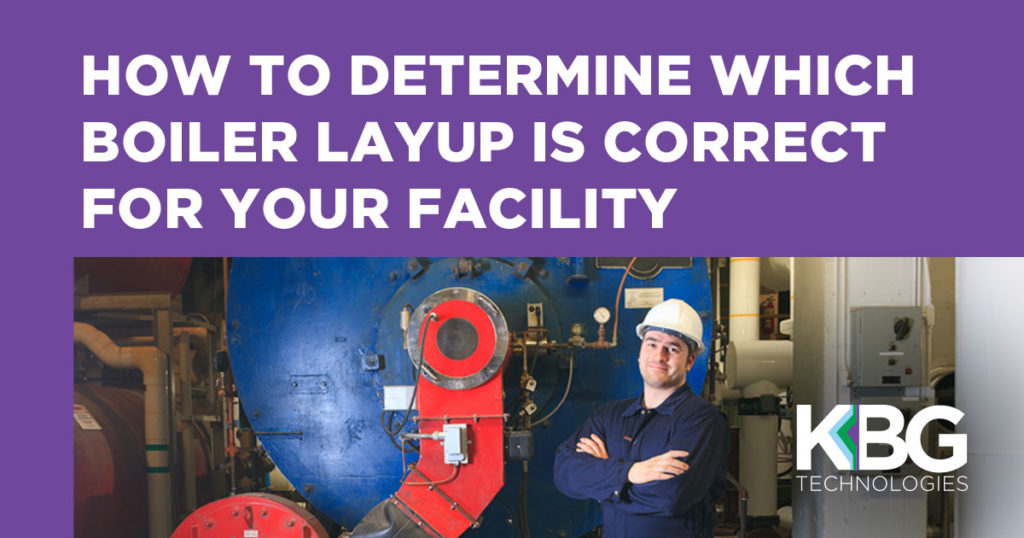How to Determine Which Boiler Layup is Correct for Your Facility

Boiler shutdowns are seasonal for most companies. Some shut down the entirety of their boilers over the summer when they aren’t needed while other companies may only shut down some of their boilers. It really depends on your company’s needs. So what’s right for your company?
That’s where it gets a bit tricky. Unfortunately, there isn’t one universal, correct boiler lay-up procedure. It’s all dependent on your needs and objectives. The first step in understanding your boiler lay-up procedure is to look at your objectives and determine what is the most important priority for your facility.
Here is a list of the five most common objectives when it comes to choosing a lay-up plan for your boiler(s).
Common Objectives:
- Provide the best asset protection
- Allow for the shortest time for the unit to come online
- Require the least thermal energy to be used during the process
- Minimize required operator attention
- Minimize your capital investment needed for implementation
Objective Breakdown
Asset Protection – Asset protection has a role in the lay-up process selected. The facility must consider how much effort and expense can be justified to maintain the boiler to be stored in ready-to-operate condition. Units that would fall into this category and require the most sophisticated lay-up procedures would include those needed to maintain plant production during seasons of high steam requirement but are not needed online during warmer months. High pressure boilers would also justify an enhanced lay-up procedure due to high stress applied to the unit when in operation.
Short Time to Come Online – Critical processes that would suffer because of an interruption in steam supply may justify the greater demands and cost of hot lay-up procedures. Maintaining idle boilers in a hot condition requires energy, although it sometimes can be recovered energy rather than fuel being burned. A mechanism to do this is the cascade lay-up procedure, where the blowdown from an operating boiler is routed to an off-line unit, maintaining both some degree of heating and water chemistry.
Minimize Required Thermal Energy – Today’s fuel prices require consideration of the energy that would be used by various lay-up options. Fuel burned in a boiler, even if it is just an igniter or pilot burner, which is not generating steam is an operating cost for which there is no calculable return. Hot lay-ups using purchased fuel are more difficult to justify when the boiler is offline for extended periods, such as a seasonal change in steam load. But in cold climates, where the loss of an operating boiler could result in total plant shutdown, a hot lay-up protocol may be warranted.
Minimal Operator Attention – Many industrial plants operate with minimal staffing and the selection of a lay-up procedure that requires extensive operator attention may not be acceptable. Also, idle boilers are sometimes in a remote part of the plant where operator visits might be difficult to work into a routine schedule. A dry lay-up, where no attention is required for an extended period, might be recommended in these cases.
Efficient Capital Investment – The cascade lay-up procedure, which uses operating boiler blowdown as the heating source for the idle boiler, may require the installation of piping to route the hot fluid into a mud drum or lower header on the stored boiler. Some investment in the piping may be required to implement this practice. Also, some lay-up strategies include the addition of a chemical scavenger to maintain a target residual. If this is necessary, a pump and piping associated with this practice is an additional cost for the plant to consider.
Our Recommendation
It is extremely important that you and your facility’s operating team undergo a process to determine what the most important objective of your lay-up protocol is prior to the selection and implementation of a program. KBG Technologies has a team of trained and experienced representatives who have helped many operating teams to determine the best protocol for their specific needs.
For more information or to schedule your lay-up assessment, please contact sales@kbgtech.com.
Please obey all plant safety requirements when working around boilers, especially when they are not in service. These are confined spaces, requiring compliance with all Confined Space Entry documentation and procedures. Hard hats, safety glasses, and safety shoes should be worn when entering a boiler. The key elements of a successful boiler lay-up are recognizing the unique hazards present when boilers are off-line and implementing the necessary safety practices.
 May 12, 2022
May 12, 2022
